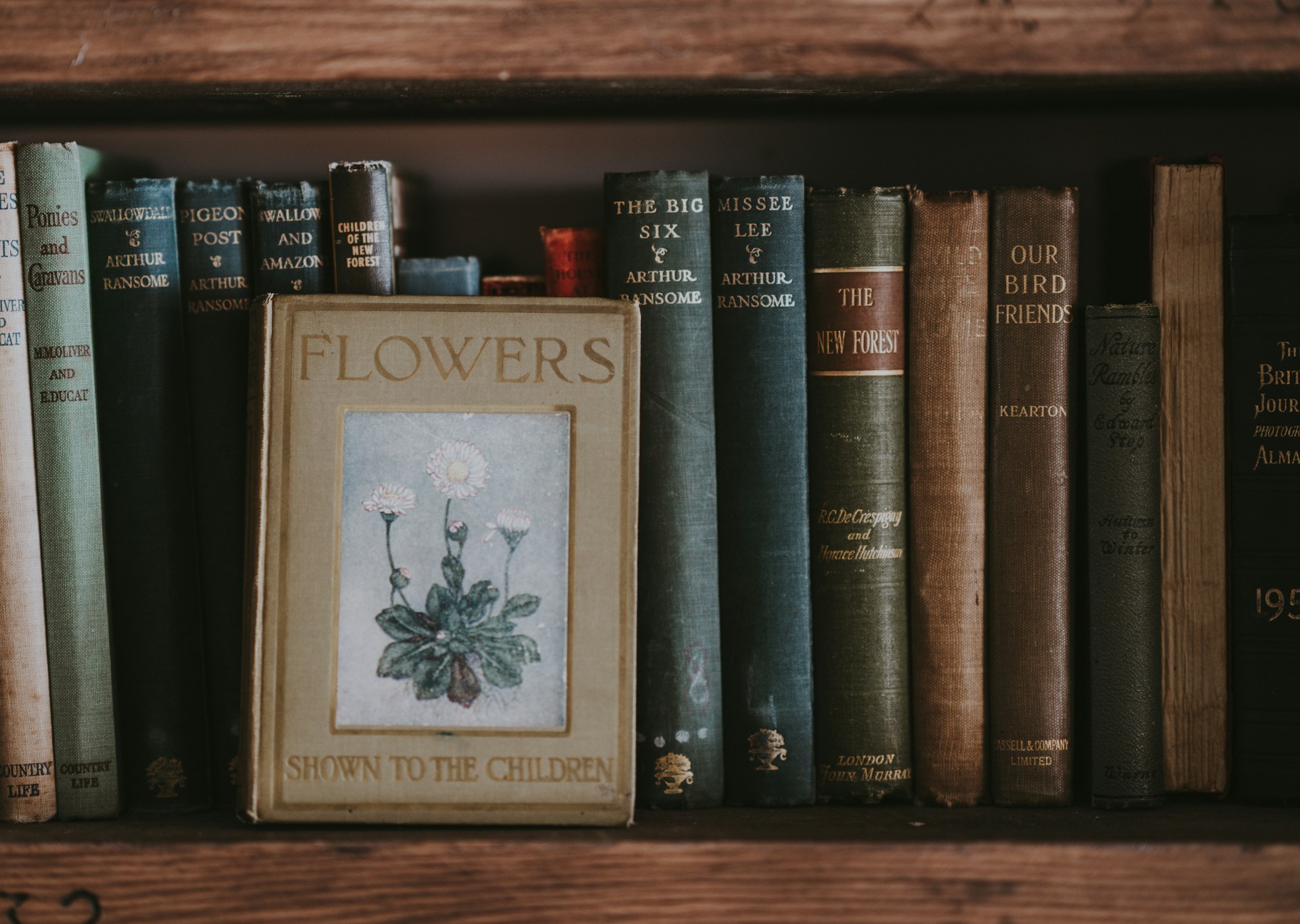
This post was written with assistance from generative AI. Read about my commitment to AI transparency here.
Introduction: Dark Poems & Their Masters
Poetry can be rather boring.
It's true.
Poetic prose symbolizes haughty babbling to some, while those who appreciate the art form often worship their famous idols as if they were gods.
This latter group sees the poet's role in the history of literature as that of a torchbearer: illuminating the darkest recesses of the human mind and giving it a voice.
And the writers who've come to represent the morose, macabre, and profound--whose names are synonymous with the devilish and wicked--shine brighter now as historical figures.
From the infernal depths of Dante's "Inferno" to the haunting despair of Plath's confessional verses, these poets have fearlessly held up a mirror to society, reflecting the darkness that lurks beneath the veneer of civility and challenging us to confront the uncomfortable truths of the human condition; a lineage that doesn't end in despair but fractures into love, obsession, and intimacy.
Let's explore some of the most prominent dark poets in history, and how these beings have shaped our collective consciousness, influencing countless artists, writers, and thinkers across generations.
Dante Alighieri (1265-1321)
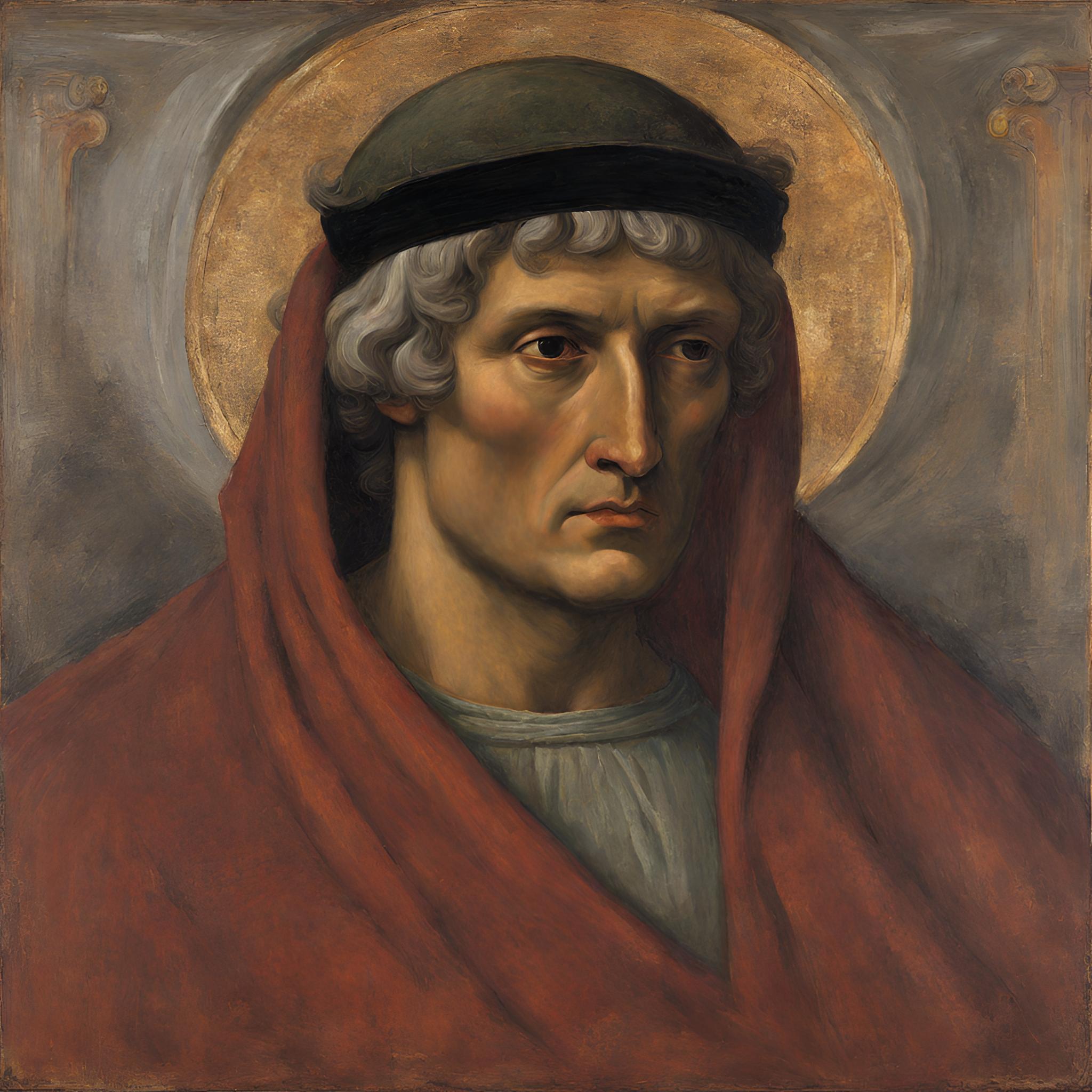
Disease, violence, famine, and horrifying medical procedures like bloodletting paint a grim picture of the late Middle Ages.
Born of the brutality, Dante Alighieri, the Italian poet, penned his epic masterpiece, "The Divine Comedy," which is often seen as a masterpiece in world literature.
It is in the first part of this trilogy, "Inferno," that Dante plunges us into the chilling depths of hell, guided by the ghostly figure of the Roman poet Virgil.
Dante unveils the nine circles of hell, each reserved for a specific category of sinners, and his vivid descriptions of the torments that await the damned are a searing indictment of human frailty and a reflection of the moral landscape of his time.
From the lustful swept away by the winds of passion to the treacherous frozen in the icy depths of Cocytus, Dante's hell is a terrifying tableau of the consequences of sin.
But "Inferno" is more than a mere catalog of punishments; it is a profound meditation on the nature of justice and a warning against the perils of straying from the path of righteousness.
Dante's masterful use of allegory and symbolism elevates his work from a simple narrative to a timeless commentary on morality.
"Inferno" has left an indelible mark on art, literature, and popular imagination, inspiring countless adaptations, interpretations, and allusions.
From the haunting illustrations of Gustave Doré to the modern reimaginings of Dan Brown's "Inferno," Dante's vision of hell has captivated and terrified audiences for centuries.
An impact which extends far beyond the realm of art and literature.
"Inferno" has shaped our conception of the afterlife in many ways, etching the image of a tiered, punitive hell into Western culture's collective consciousness.
It has prompted philosophical and theological debates on the nature of sin, redemption, and divine justice, influencing thinkers from Thomas Aquinas to Jean-Paul Sartre.
In the end, Dante's Inferno stands as a testament to the ability of poetic prose to expose human beings' intrinsically impure nature as imperfect and flawed creatures capable of conscious immoral acts.
It reminds us that even in the face of unimaginable horror, there is still the possibility of hope, redemption, and the triumph of the human spirit.
By The Way, Don't Just Study The Masters...
Develop Your Own Voice With Ink-Stained Shadows: An Extensive Dark Poetry Guide Designed To Help You Master Dark Verse In 21 Days Or Less
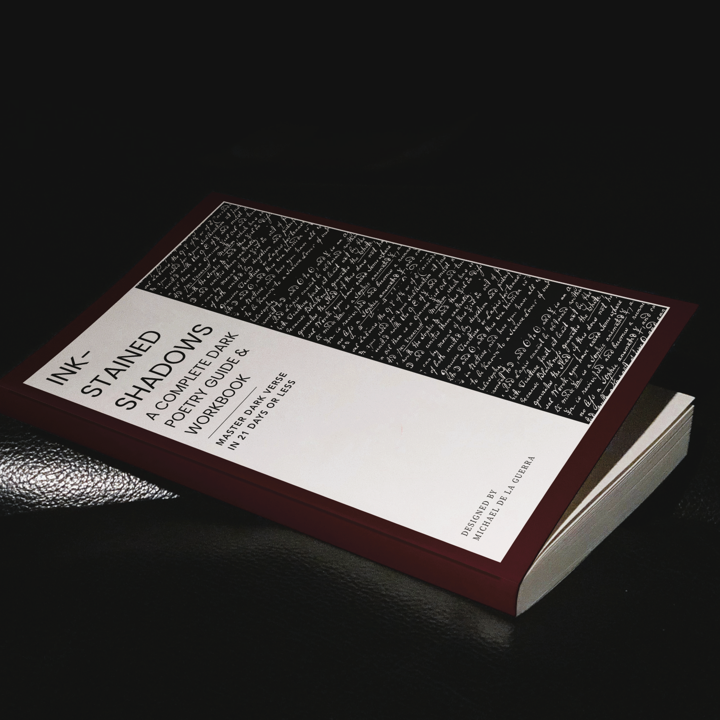
- 4 Battle-Tested Poetry Templates, including fill-in-the-blank structures that generate powerful poems immediately
- 350+ Language and Word Clusters organized by category (nouns, verbs, adjectives, textures) so you never struggle to find language that matches your darkness
- The 7-Day Dark Poetry Challenge with daily prompts that push you beyond diary entries into actual art
- The Dark Poetry Revision Checklist that transforms raw drafts into polished pieces worth preserving
- AND MORE!
Edgar Allan Poe (1809-1849)
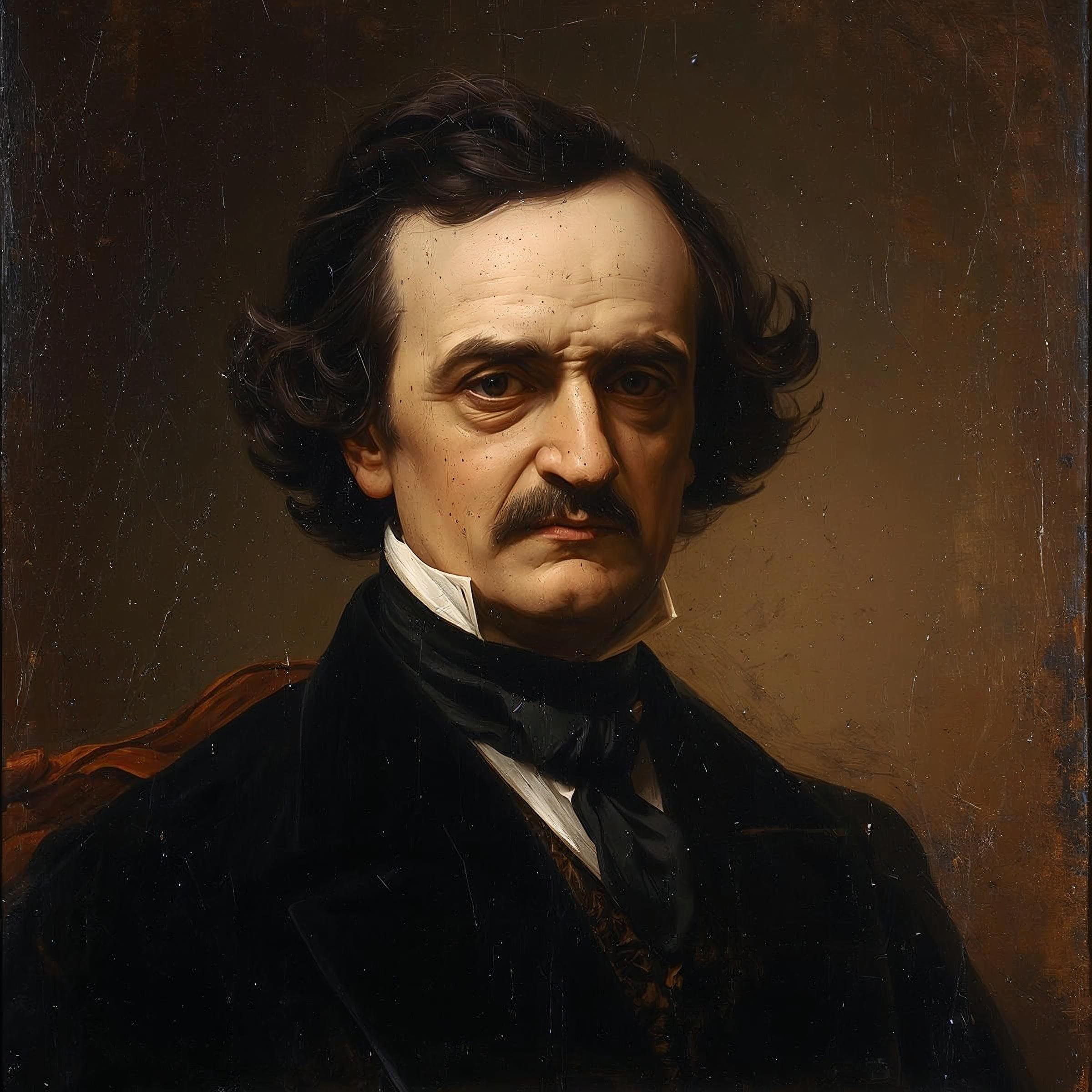
A leap forward and into 19th-century America finds us in company of Edgar Allan Poe, a poet and author whose name has become synonymous with morbidity and darkness.
Poe's tales of murder, madness, and the supernatural have earned him the title of the "Father of the Detective Story" and a place of honor among the pioneers of horror and science fiction.
Poe's genius truly shines in his poetry, casting a sickly pallor over the romantic sensibilities of his age.
In works like "The Raven," "Annabel Lee," and "Ulalume," he plumbs the depths of the human psyche, giving voice to the despair, the longing, and the terror that lurk within us all.
Who can forget the haunting refrain of "The Raven," with its eerie evocation of a love lost and a mind unhinged?
The poem's stanzas are a masterclass in atmosphere and mood, each word carefully chosen to create a sense of mounting dread and inescapable doom.
The raven itself, perched ominously above the narrator's chamber door, becomes a symbol of the inescapable past, the lingering ghosts of guilt and regret.
In "Annabel Lee," Poe takes us to the brink of madness, painting a portrait of a love so deep and so obsessive that it transcends the boundaries of life and death.
The poem's lush, lyrical language belies the darkness at its core, the unsettling suggestion that the narrator's devotion has crossed the line into something unhealthy and all-consuming.
Few poets demonstrate more clearly how darkness mutates into romantic obsession.
And then there is "Ulalume," a fever dream of a poem that takes us on a nightmarish journey through a landscape of the mind.
With its eerie, incantatory rhythm and its surreal, hallucinatory imagery, the poem is a testament to Poe's ability to evoke the darkest corners of the human psyche.
Poe's influence is as vast and enduring as the evil still haunts his work. His poetry and tales have inspired countless artists, writers, and filmmakers, from the French Symbolists to Alfred Hitchcock to Tim Burton.
His aesthetic descriptions of the macabre and uncanny have become a staple of popular culture, infusing everything from horror films to gothic fashion with a sense of dark romanticism.
Poe's explorations of the human psyche and the irrational have also laid the groundwork for the development of modern psychology and the study of abnormal behavior. His fascination with the workings of the criminal mind has influenced the development of forensic science and the detective genre.
In the end, Poe's poetry showcases the perennial power of the written word to unsettle, provoke, and enlighten; even in the darkest of nights, there is still the flicker of a candle, the glimmer of truth waiting to be found.
Charles Baudelaire (1821-1867)
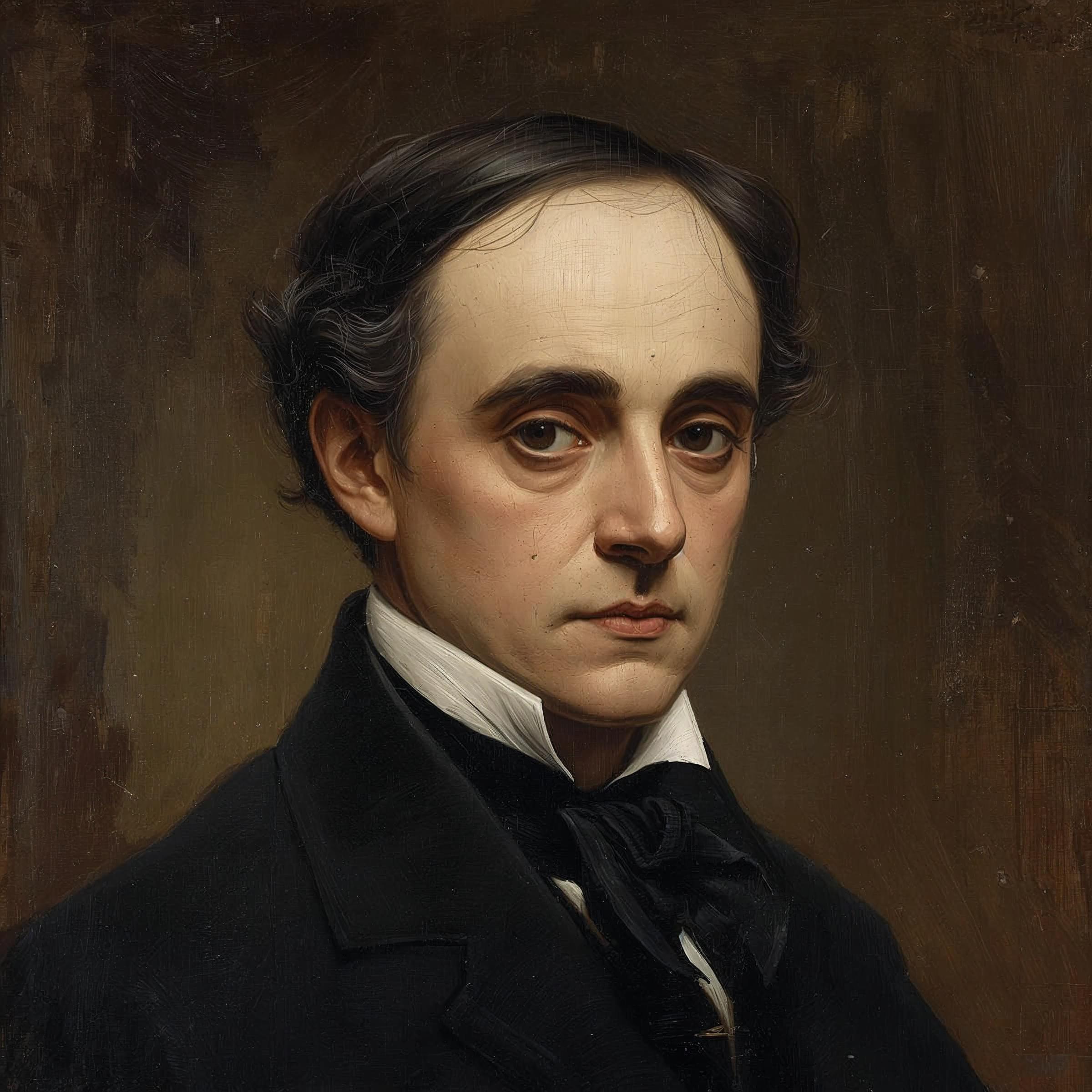
As we cross the Channel to the bohemian streets of 19th-century Paris, we find ourselves in the company of Charles Baudelaire, a poet whose work would challenge the very foundations of literary and moral propriety.
With his groundbreaking collection, "Les Fleurs du Mal" ("The Flowers of Evil"), Baudelaire would push the boundaries of what was considered acceptable in poetry, exploring themes of decadence, eroticism, and the darker aspects of the human experience.
Baudelaire's poetry is a hothouse of sensual imagery and vivid language, a heady mix of the beautiful and the grotesque; his work shapes how later poets write about love as decay and desire. In poems like "Une Charogne" ("A Carcass"), he takes us on a visceral journey into the heart of decay, describing in lurid detail the decomposition of a rotting corpse.
It is a shocking, almost pornographic display of the ultimate fate that awaits us all, a memento mori that forces us to confront the ugly reality of our own mortality.
But Baudelaire is not content merely to shock and disgust; his poetry is also a profound exploration of the human condition, a meditation on the fleeting nature of beauty and the inescapable pull of vice.
In poems like "L'Albatros" ("The Albatross"), he uses the image of a majestic seabird trapped on land as a metaphor for the plight of the poet, misunderstood and reviled by a society that cannot comprehend his genius.
Baudelaire's influence on culture is immeasurable, his work a touchstone for generations of poets, artists, and thinkers. His aesthetic of decadence and his celebration of the artificial would pave the way for the development of the Symbolist and Decadent movements in literature and art.
His unflinching exploration of the dark underbelly of human nature would inspire the likes of Arthur Rimbaud, Paul Verlaine, and Oscar Wilde.
But Baudelaire's impact extends far beyond the realm of literature.
His work has been set to music by composers like Claude Debussy and Alban Berg, his poems transformed into haunting melodies that capture the essence of his dark romanticism. His influence can be seen in the work of countless artists, from the Symbolist painters of the late 19th century to the Surrealists of the early 20th century.
Perhaps most importantly, Baudelaire's poetry has helped to shape our very conception of modernity.
His vision of the city as a place of both beauty and squalor, of the individual as a flâneur adrift in a sea of strangers, has become a defining motif of urban life. His exploration of the relationship between art and commodity, between the sacred and the profane, has anticipated the central tensions of consumer culture.
In the end, Baudelaire's poetry stands as a testament to the power of art to challenge, to provoke, and to transform. It is a reminder that beauty can be found in the unlikeliest of places, that even in the depths of despair there is still the possibility of transcendence.
Emily Dickinson (1830-1886)
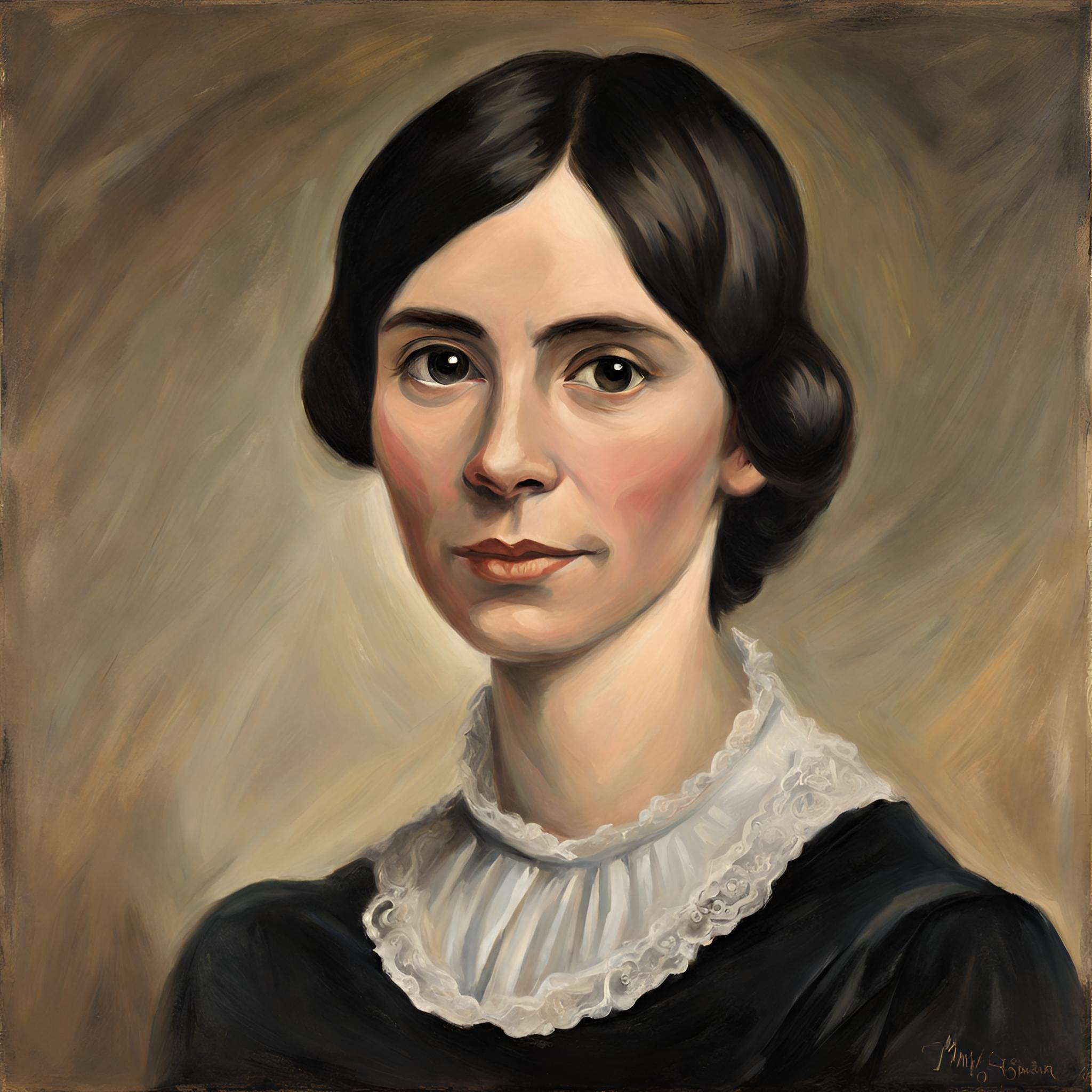
As we return to the shores of America, we find ourselves in the quiet, cloistered world of Emily Dickinson, a poet whose work would not be fully appreciated until long after her death.
Dickinson's poetry is a enigmatic, almost mystical, filled with riddles and metaphors that seem to hint at some deeper, ineffable truth.
At the heart of Dickinson's work is a preoccupation with death, immortality, and the afterlife.
In poems like "Because I could not stop for Death," she personifies death as a gentleman caller, a benevolent figure who takes the speaker on a leisurely carriage ride through the stages of life. It is a startling, almost whimsical image, one that subverts our usual associations of death with fear and finality.
But Dickinson's poetry is not merely a meditation on mortality; it is also a profound exploration of the inner life of the mind.
In "I felt a Funeral, in my Brain," she takes us on a harrowing journey through the landscape of a mind in crisis, a mind haunted by its own thoughts and perceptions. The poem's disjunctive syntax and jarring imagery create a sense of psychological fracture, of a self that is coming apart at the seams.
Dickinson's influence on culture is subtle but pervasive. Her unique voice, with its idiosyncratic punctuation and unconventional capitalization, has become a model for generations of poets seeking to break free from the constraints of traditional form and language. Her exploration of the female experience, of the quiet desperation of a life lived in isolation, has resonated with readers across the centuries.
Perhaps Dickinson's greatest legacy is the way in which her poetry has helped to shape our understanding of the mind and its workings.
Her keen psychological insight, her ability to capture the fleeting thoughts and impressions that flit through consciousness, has anticipated the discoveries of modern neuroscience and psychology.
Her work is a reminder that the mind is a vast and mysterious landscape, one that we are only beginning to map.
In the end, Dickinson's poetry stands as a testament to the power of introspection, to the rich inner life of the individual. It is a reminder that even in the midst of isolation and despair, there is still the possibility of beauty, of meaning, of transcendence.
Sylvia Plath (1932-1963)
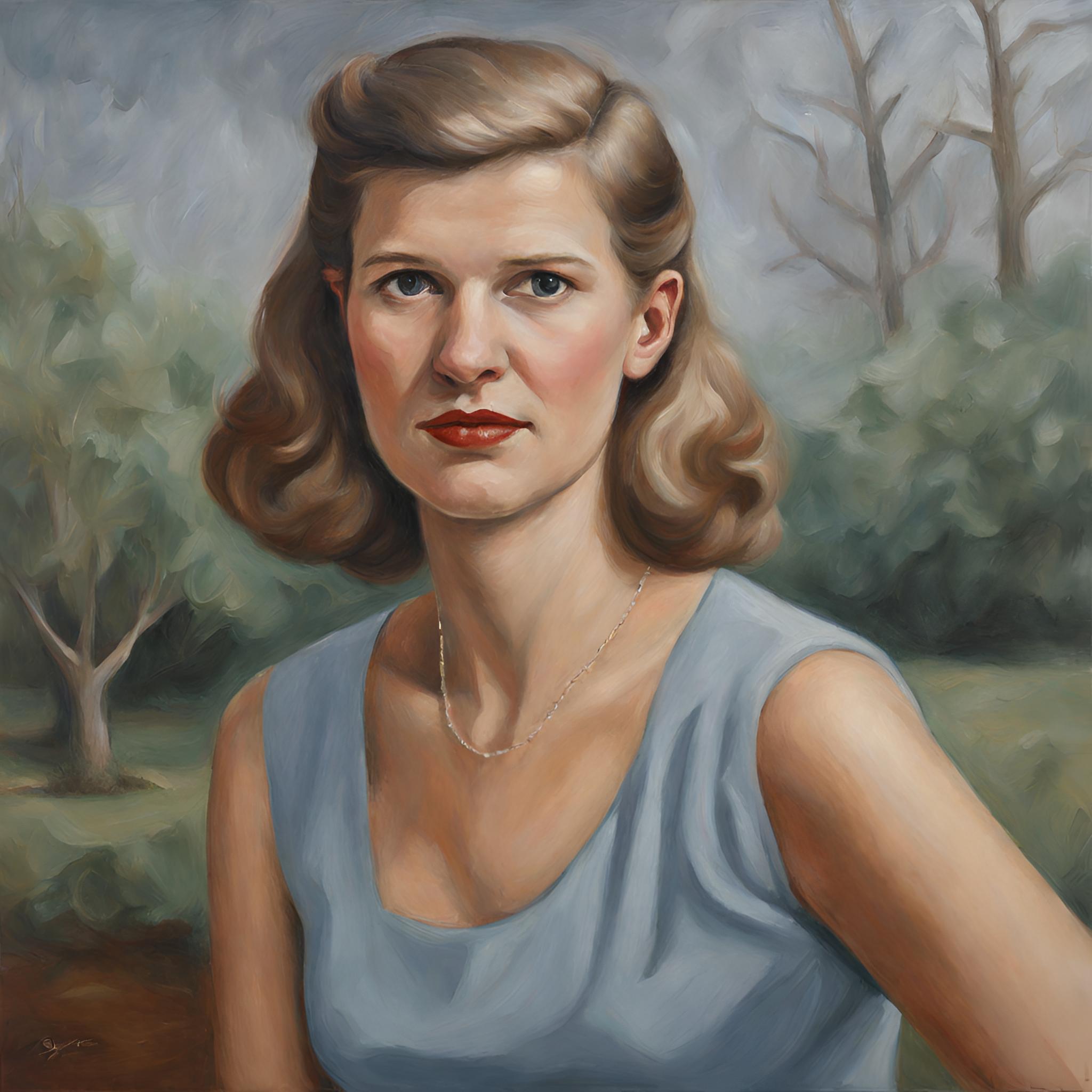
As we move into the turbulent landscape of the 20th century, we find ourselves in the company of Sylvia Plath, a poet whose work would become a touchstone for the feminist movement and a searing indictment of the patriarchal society in which she lived. Plath's poetry is a raw, visceral, a scream of rage and despair that echoes across the decades.
At the center of Plath's work is a profound sense of alienation, a feeling of being trapped in a world that is indifferent or hostile to one's very existence.
In poems like "Daddy," she grapples with the legacy of her father's death and the way in which it has shaped her own identity and relationships. The poem's violent, almost grotesque imagery, its invocation of the Holocaust and the horrors of history, creates a sense of suffocating claustrophobia, of a past that will not let go.
But Plath's poetry is not merely a litany of personal grievances; it is also a powerful critique of the societal forces that shape and constrain the lives of women.
In "The Applicant," she skewers the absurdities of the marriage market, the way in which women are reduced to mere commodities in the eyes of men. The poem's biting satire and its surreal, almost nightmarish imagery create a sense of the uncanny, of a world in which the familiar has become strange and threatening.
Plath's unflinching honesty, her willingness to confront the darkest aspects of her own psyche, has inspired generations of poets and writers. Her exploration of the female experience, of the ways in which women are silenced and marginalized, has become a rallying cry for the feminist movement.
Plath's poetry has helped destigmatize mental illness and brought attention to the devastating impact of depression and suicide. Her semi-autobiographical novel, "The Bell Jar," is a harrowing account of a young woman's descent into madness, a searing indictment of the way in which society fails those who are most vulnerable.
In the end, Plath's poetry stands as a testament to the power of art to speak truth to power, to give voice to the voiceless. It is a reminder that even in the face of unimaginable pain and suffering, there is still the possibility of beauty, of transcendence, of hope.
The Edge of Darkness
We've explored the lives and works of some of the darkest and most influential poets of all time.
From Dante's "Inferno" to Plath's "Ariel," these works have helped to shape our understanding of the human experience to illuminate the dark corners of the psyche and the soul, reminding us of the enduring power of poetry to speak to the deepest parts of ourselves, to give voice to the fears and desires that we often keep hidden.
These poets have shown us that there is beauty in darkness, that there is meaning in suffering, that there is hope even in the face of despair.
Their work speaks to our shared humanity and the common threads that bind us all together. In reading these poems, we are forced to confront parts of ourselves we often reject as heretical, as individuals and within our larger society. If we survive the darkness in our minds, in others, and in the natural and divine, we arm ourselves with resilience and strength upon our return.
As we continue to grapple with the challenges and uncertainties of our own time, the voices of these poets remain as vital and relevant as ever. They remind us that art has the power to inspire, to challenge, to transform, and that even in the darkest of times, there is still the possibility of light.
So let us continue to read and to listen, to seek out the voices that speak to us from across the centuries.
For in doing so, we are not only enriching our own lives, but we are also keeping alive the legacy of these great poets, ensuring that their words will continue to resonate for generations to come.
Ready To Write Your Own Dark Poetry Worth Preserving?
Discover the Emotionally Potent Techniques History's Most Celebrated Poets Used to Create Works That Outlived Them by Centuries With Ink-Stained Shadows: An Extensive Dark Poetry Guide & Workbook (Featuring Templates, Language Clusters, Formulas, Advanced Methods, And More)

Master Dark Verse In 21 Days Or Less With...
- 4 Battle-Tested Poetry Templates including fill-in-the-blank structures that generate powerful poems immediately
- 350+ Language and Word Clusters organized by category (nouns, verbs, adjectives, textures) so you never struggle to find language that matches your darkness
- The 7-Day Dark Poetry Challenge with daily prompts that push you beyond diary entries into actual art
- Advanced "Color Without Color" Technique that creates dark atmosphere without relying on clichéd "black" imagery
- Line Breaks as Weapons - specific methods for using white space to create emotional gut-punches
- The Dark Poetry Revision Checklist that transforms raw drafts into polished pieces worth preserving
- Visceral Imagery Framework showing exactly how to engage all five senses in your dark poetry
- Real Poetry Examples demonstrating each technique so you can see the transformation in action
- Common Dark Poetry Pitfalls and how to avoid the melodrama trap that makes poems forgettable
- "Things That Die" List Poem Template - a proven structure for exploring mortality with unexpected beauty
- The Monster Within Framework for giving voice to your anxiety, depression, or anger in ways that resonate
- 21-Day Mastery Timeline that takes you from beginner to confident dark poet with daily practice
